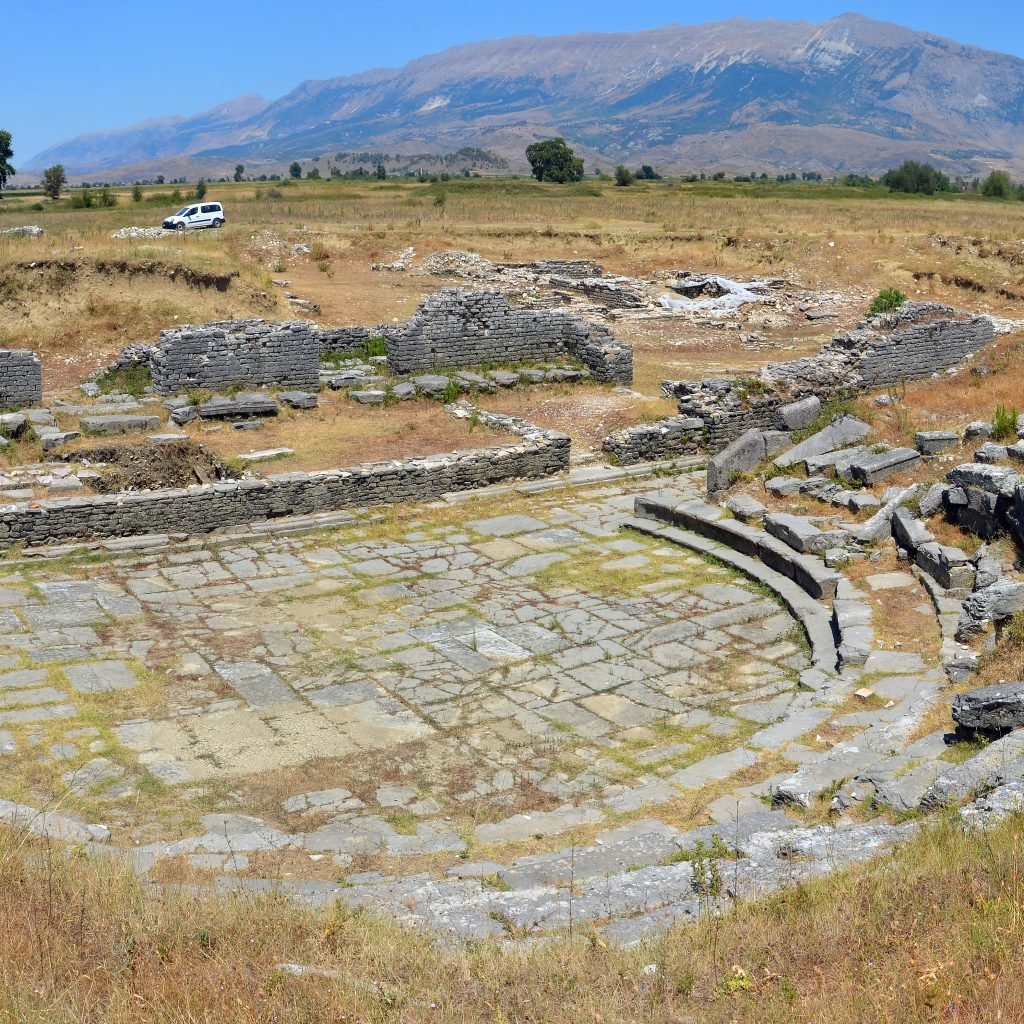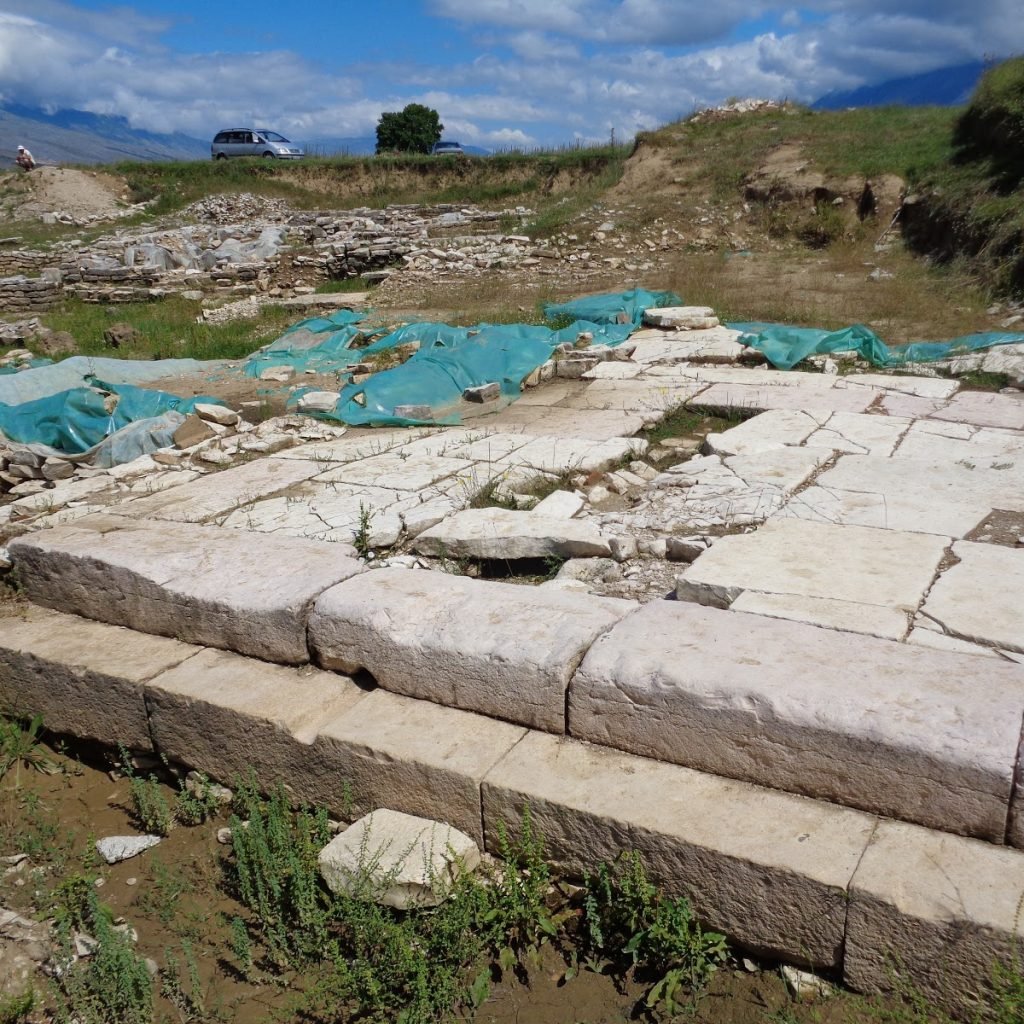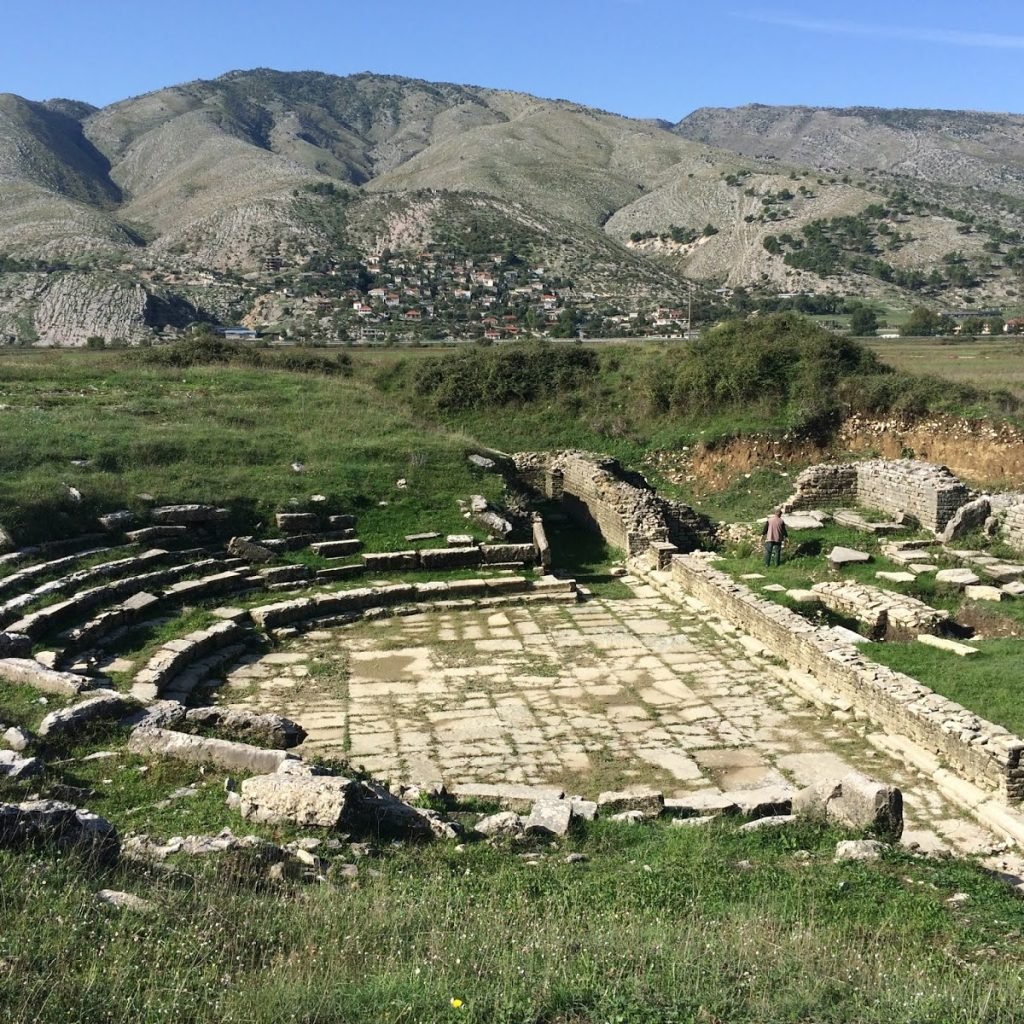Hadrianopolis, an ancient city located near the modern-day town of Sofratikë in southern Albania, was founded by the Roman Emperor Hadrian around the 2nd century AD. The city was strategically situated on the important Via Egnatia, a road that connected Rome with Byzantium (modern-day Istanbul). This location made Hadrianopolis a significant center for trade and military activities during the Roman Empire.
The city was designed in the typical Roman style, with a grid pattern of streets, a forum at its center, and various public buildings including baths, temples, and a theater. The ruins of Hadrianopolis reveal its former grandeur, with remnants of the theater, which once seated thousands of spectators, being particularly noteworthy. The city’s layout and architectural style reflect the influence of Roman urban planning, with attention to symmetry, functionality, and monumental structures.
Archaeological excavations in Hadrianopolis have uncovered a wealth of artifacts, including coins, pottery, and inscriptions, which provide insight into the daily life and culture of its inhabitants. The city likely served as a regional hub, supporting agriculture and trade in the surrounding areas.
Over time, Hadrianopolis declined, particularly during the Byzantine period, as other cities in the region grew in importance. Today, it stands as a testament to the Roman legacy in Albania, attracting visitors and scholars interested in exploring the remnants of its past. The site offers a glimpse into the ancient world, where the echoes of Roman engineering and culture still resonate.











Comment (0)